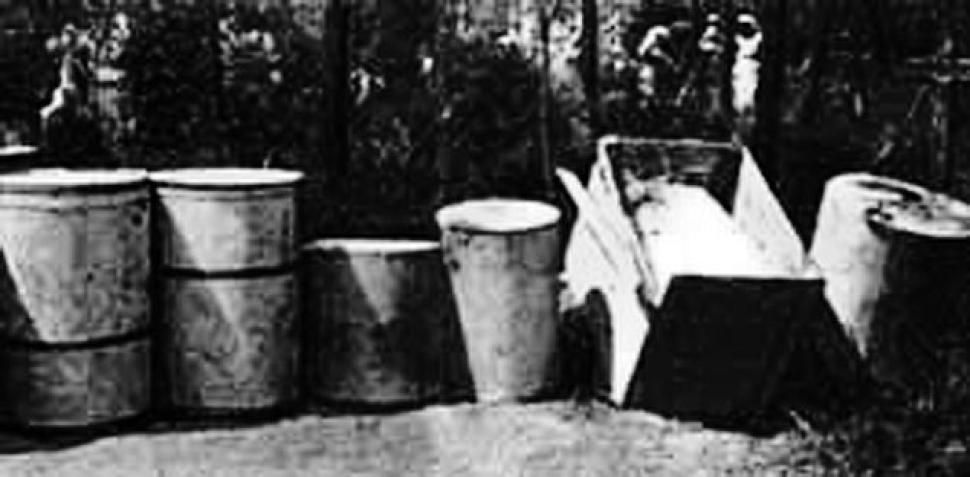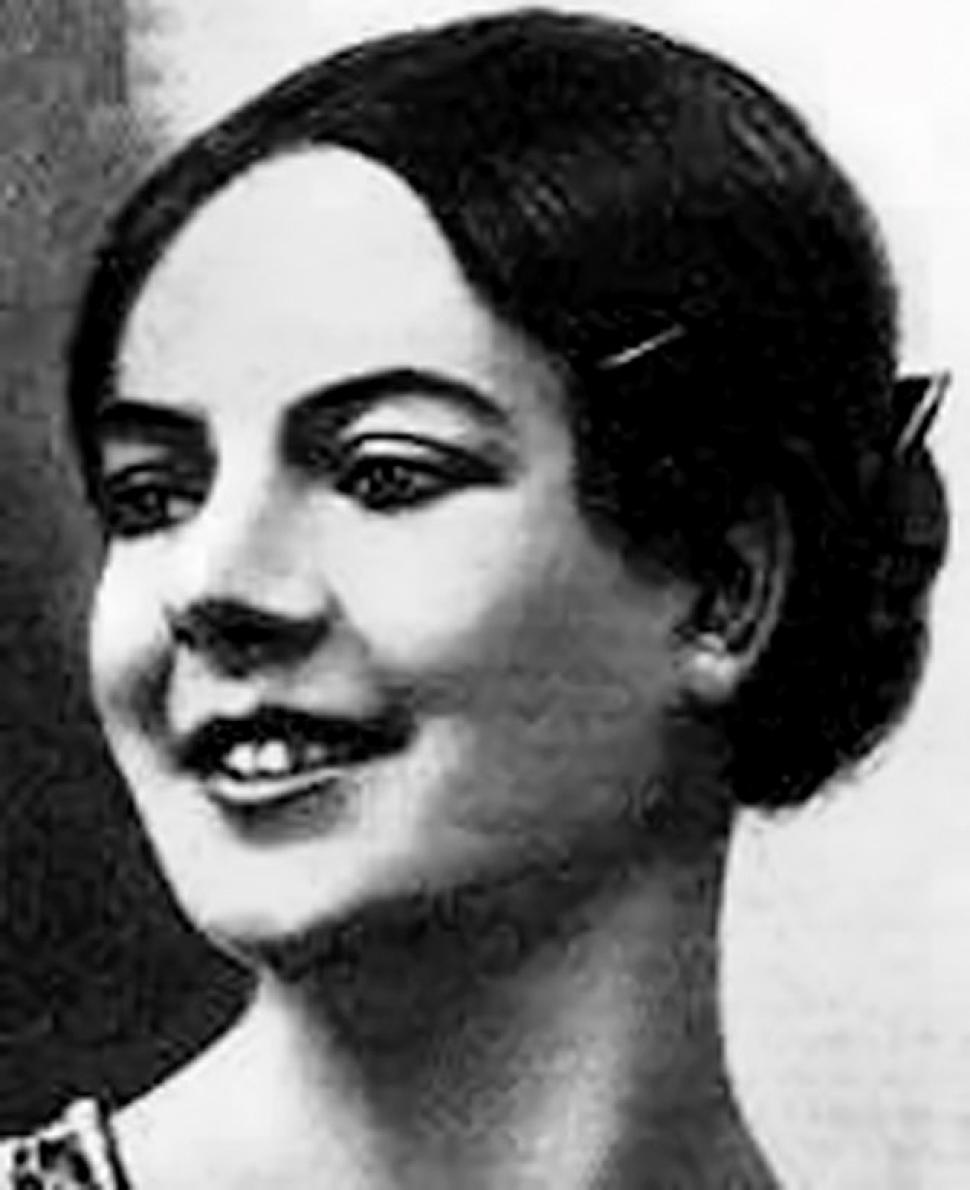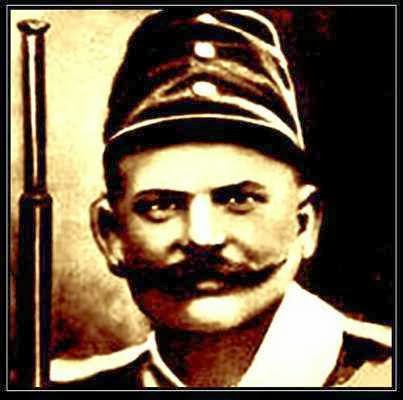
|
|||
Kiss of Death: Terrifying True Story of A Vampiric Serial Killer - Unexplained Mysteries
See more at: http://en.wikipedia.org/wiki/B%C3%A9la_Kiss
There have been plenty of scary stories of serial killers throughout history, but the tale of a Hungarian man named Bela Kiss may just be the most frightening out of all of them. Born in the late 1800s, Bela Kiss lived in a town close to Budapest, Hungary by himself. Kiss liked to delve in astrology as well as other occult practices. He was generally well-liked by his neighbors, but regarded as somewhat of a loner, as many serial killers turn out to be. Neighbors did notice that Kiss kept several large steel barrels in his home; however, they paid little attention as he supposedly kept them filled with oil in order to prepare for rationing during the upcoming war. He left to fight in World War I after being conscripted in 1914, leaving his home in the care of his housekeeper, Mrs. Jakubec. Lovelorn men and women have always been an easy target for serial killers. France had Henri Landru, a contemporary of Kiss, who romanced war widows, taking their money and their lives, and then reducing their bodies to cinders in his furnace. Along with fire, acid baths and cannibalism have been among the favorite methods these serial killers use to cover up their horrible deeds. Kiss had a singular technique for ridding himself of all those inconvenient corpses. He pickled them. In 1914, Kiss, then 37, marched off to fight in World War I. He left his home — a cottage he rented for more than 15 years in Cinkota, near Budapest — in the care of an elderly housekeeper. Then he disappeared into the chaos that was Europe in those years. The Mystery In 1916, Budapest police received a phone call from Kiss’s landlord, who had just noticed the several large metal drums that Kiss kept. Remembering how he had been saving the oil for rationing during war, police ordered that the drums be seized for distribution amongst soldiers. However, upon inspecting the drums, they noticed a strange smell emanating from within… Upon opening one of the drums, against the wishes of the housekeeper Mrs. Jakubec, police discovered something horrifying: a mangled body of a young woman, stuffed inside. Police immediately searched the other drums, finding body after body, all of women that seemed to be strangled to death. They also searched his house, in which they discovered a total of 24 bodies.  When Bela Kiss' landlord poked a little hole in one of his tenant's barrels, he was overwhelmed by the smell of death. In his home, police discovered dozens of letters detailing exchanges between Kiss and young women looking for marriage. Kiss would woo young girls with little or no relatives living nearby, so that no one would notice their disappearance. The women would come to Kiss’s home, where he would poison and strangle them, and then pickle their bodies in alcohol before sealing them inside the drums. The scariest part- police noticed that the women’s bodies were all completely drained of blood. They also found puncture marks on the women’s necks, leading them to believe Kiss was some sort of deranged vampire. Bela Kiss (1877 – ?) was a Hungarian serial killer. He is thought to have murdered at least 24 young women and attempted to pickle them in giant metal drums that he kept on his property. In Hungarian "Kiss" means "Little". Life Bela Kiss was a tinsmith who had lived in Cinkota (nowadays part of Budapest), Hungary since 1900. His neighbors considered him a pleasant man to live with. Kiss was an amateur astrologer and allegedly fond of other occult practices. In 1912 Kiss hired a housekeeper, begun to correspond with a number of attractive women and sometimes took them to his home in Cinkota. However, his housekeeper Mrs Jakubec, never really got to know any of them. Townsfolk also noticed that Kiss had collected a number of metal drums. Kiss had told the town police who questioned him that he filled them with gasoline in order to prepare for the rationing of the oncoming war. When World War I began, he was conscripted and left his house in the care of Mrs Jakubec.
Search In July 1916, Budapest police received a call from a Cinkota landlord who had found seven large metal drums. The town constable had remembered Kiss' stockpile of gasoline, and led needy soldiers to them. Upon attempting to open the drums, a suspicious odour was noted. Detective Chief Charles Nagy took over the investigation and opened one of the drums, against the protests of Mrs Jakubec. There they discovered the body of a strangled woman. The other drums yielded similarly gruesome content. A search of Kiss's house resulted in a total of 24 bodies. Nagy informed the military that they should arrest Bela Kiss immediately, if he was still alive - there was also a possibility that he was a prisoner of war. The name, unfortunately, was very common (Kiss means Little in Hungarian). Nagy also arrested the housekeeper Jakubec and asked the postal service to hold any possible letters to Kiss, in case he had an accomplice that could warn him. Nagy initially suspected that Jakubec might have had something to do with the murders, especially when Kiss had left her money in his will.  Margaret Toth was killed in 1906 — but not before Bela Kiss forced her to write a bogus letter stating she was headed to America Jakubec assured police that she knew absolutely nothing about the murders. She showed them a secret room Kiss had told her never to enter. The room was filled with bookcases but also had a desk that held a number of letters, Kiss' correspondence with 74 women and a photo album. Many of the books were about poisons or strangulation. From the letters Nagy discerned several things. The oldest of the letters were from 1903 and it became clear that Kiss was defrauding the women who had been looking for marriage. He had placed ads in the marriage columns of several newspapers and had selected mainly women who had no relatives living nearby and knew no one who would quickly notice their disappearance. He wooed them and convinced them to send him money. If they proved troublesome for him, he killed them. Police also found old court records that indicated that two of his victims had initiated court proceedings because he had taken money from them. Both women had disappeared and the case had been dismissed. Escape On October 4th, 1916 Nagy received a letter that stated that Kiss was recuperating in a Serbian hospital. Nagy arrived too late — Kiss had fled and substituted a dead body of another soldier in his bed. Nagy alerted all the Hungarian police. Unfortunately, all the sightings police could check proved to be wrong. On several later occasions, speculation arose that Béla Kiss had perhaps faked his death by exchanging identities with a dead soldier during the war. He was supposedly sighted numerous times in following years and there were various rumors about his fate, including that he had been imprisoned for burglary in Romania or he had died of yellow fever in Turkey. Sightings In 1920 a soldier in the French Foreign Legion reported on another legionnaire named Hoffman (the name Kiss had used in some letters) who had boasted how good he was at using a garrote, and who fit Kiss' description. "Hoffman" deserted before police could reach him. In 1932, homicide detective Henry Oswald was certain he had seen Kiss coming out of Times Square Subway in New York City. There were also rumors that Kiss was living in the city and working as a janitor but they could not be verified. The fate of Béla Kiss remains unknown. Possible Appearance in Popular Culture The story of Kiss has never been used under his character's name in any American film of any note. However the incident from 1932 involving detective Henry Oswald has appeared (with one or two significant changes) in a "B feature" starring Basil Rathbone. In the film The Mad Doctor from 1940. Rathbone plays a middle European doctor who marries and murders wealthy women, with the assistance of his friend (perhaps lover) Martin Kosleck. Having moved to New York City, Rathbone is continuing his operations here when he runs into a suspicious elderly man played by Ralph Morgan. Morgan finds (at the 42nd Street Public Library) the proof that would identify Rathbone with his earlier European killings. Rathbone and Kosleck follow Morgan into a subway station and (while Kosleck opens up a large newspaper to keep possible onlookers from viewing the scene) Rathbone confronts Morgan and throws him into the tracks as a train enters the station. At this point Rathbone and Kosleck both quietly exit by a staircase, when Kosleck is called by his name and sees a familiar face from Europe. They are chatting, while Rathbone leaves the area, and then Kosleck realizes that the man who stopped him was a police detective in Europe and has become one in New York City now. Kosleck panics and starts running, and the officer (noting the confusion from what happened in the station) shoots and kills him. Not exactly what detective Oswald had a chance to do to Kiss, but an interesting variant on the event. comments powered by Disqus Submit News/Videos/Links | Discuss article | Article Link | More Unsolved and Unexplained Mysteries |
More can be addded on request. Direct your requests at vinit@theunexplainedmysteries.com
